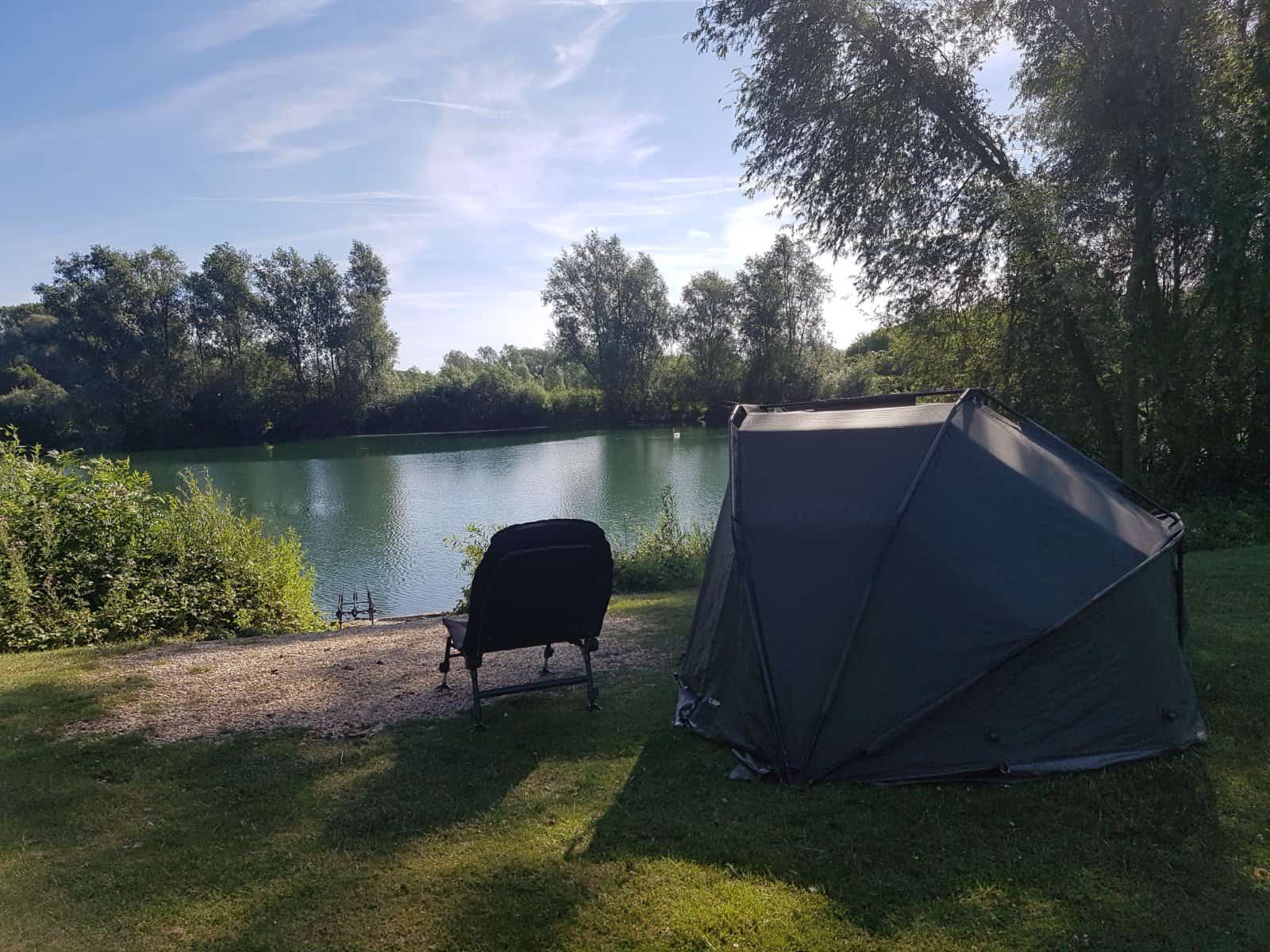Tip 1
The first carp fishing tip is to look out for diving birds whenever you are at the lake, even if you aren’t fishing.
This may be an indication that there is bait on the lake bed they are feeding on.
If this is the case, someone has been fishing on that spot.
It may be worth some investigating, perhaps that is a nice clear spot that the fish regularly visit?
If someone else is making the effort to put the bait on that spot, it may be worth the effort for you to put a rig there for an hour or two.
Tip 2
The majority of anglers will turn up at a lake and cast as far into the horizon as they can. But don’t underestimate the margins!
Remember, most anglers will throw their leftover bait into the margins as they pack up and leave.
This is perfect for the fish, as most of the time it will be a safe time for them to feed!
When you go to a swim, look to see where you think the other anglers would have thrown their bait in at the end of a session?
Put some bait there!
Even if you don’t fish that spot straight away, you’ll be able to look out of bubbles and signs of feeding fish.
Plus it’s a really easy place to lower a bait in if they start feeding without disturbing them.
A guy I knew, would show up at the lake for only a couple of hours after everybody had left.
He would walk to each swim and look for feeding fish in the margins, if there were no signs of fish feeding, he would trickle a little bit of bait in then move to the next swim.
When he found signs of feeding fish, he would lower a small single bait onto the spot with no lead and hook into a fish almost immediately.
He very very rarely blanked!
He also got to enjoy a whole day with his family and catch a few fish in the evening, he had the best of both worlds!
If you are strapped for time but still want to fish, give this a go.
Tip 3
When you reel in to change your bait or recast, always check your hook to see if there is any debris attached such as leaves or weed. It could be a sign that you’re fishing in an area where your bait could be masked by debris.
Also, check the lead for clay or silt deposits and check the sharpness of your hook against your fingernail.
I have reeled in all manners of debris in the past! Including crisp packets, coke bottles, even an old t-shirt!
Tip 4
Always looks for the spots on the lake that other anglers don’t fish.
These areas are golden for catching fish when the lake is quiet, usually, if there are areas that aren’t fished, the fish will hold up in there because they know they are safe and won’t come across a hook.
Remember my story about Dave and the Bush? This is a perfect shiny example.
If you find an area that people don’t fish, keep it to yourself and keep it discreet when fishing there. Trickle some bait on the spot every now and then to give the fish confidence feeding there. Once you can see the bubblers and evidence they are feeding, slowly and gently lower a rig onto the spot.
These are great tactics to find the bigger fish on the lake and usually end up with catching fish within 5 minutes of casting a rig in.
If you do find one of these spots, don’t forget to mark it on your lake map and enter it into your diary as an area of interest.
Tip 5
Always feel the lead down.
When you are casting properly, you will always have control of the distance and position of your cast.
When the lead is reaching the maximum distance from the cast, you will need to slow the line down with your index finger.
To “feel the lead down” or to feel the lead
land when the lead
hits the water, you will need to hold the fishing line with your index finger for two reasons, one to stop the line coming off of the spool and getting tangled whilst the bail arm is off, but also to keep tension on your line by lifting your rod
tip slowly at the same time.
This will help straighten your line and rig out, but will also give you feedback on what type of lake bed your rig
has landed on, it will also give you a rough idea of how deep the water is that you landed in.
If you do it correctly, you will feel a bump through the rod when it hits the lake bed.
Most of the time, you will want to fish on a clear spot, either gravel or something hard, if you feel the bump, most of the time you can be satisfied that you are on a clear spot. If you don’t feel the bump, you may have landed in weed, which can conceal your rig and bait
.
When you find the hard spots, make sure you note the location and the depth on your lake map. If you catch a fish from this spot, you know it’s a good spot for next time.
I have made a lot of mistakes during my fishing sessions and don’t want you to make the same mistakes. I’ve learned the hard way over 20 years of fishing most weekends, testing, tweaking, and testing again and now want to help you excel with your carp fishing.
If you need any help, you can reach me at Fishing Again’s Facebook page
Last Updated on February 3, 2024 by Shane











